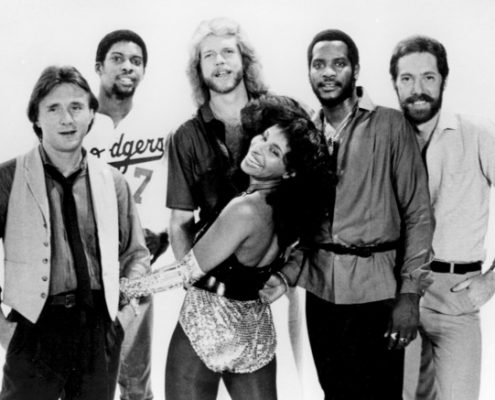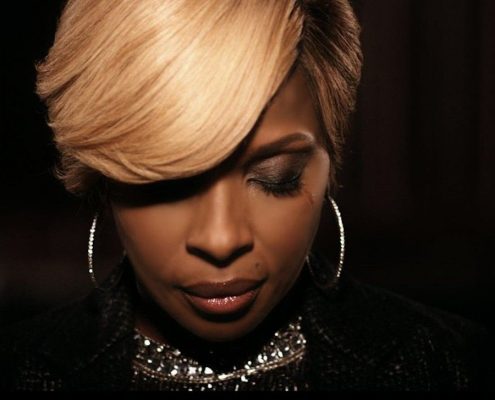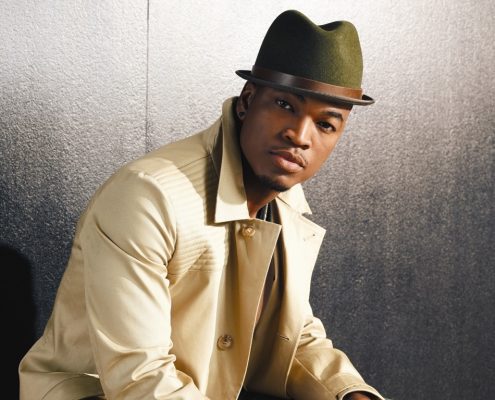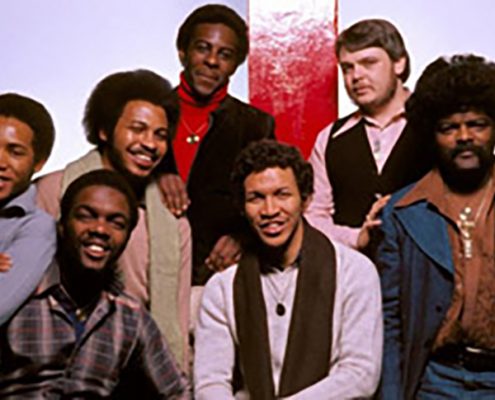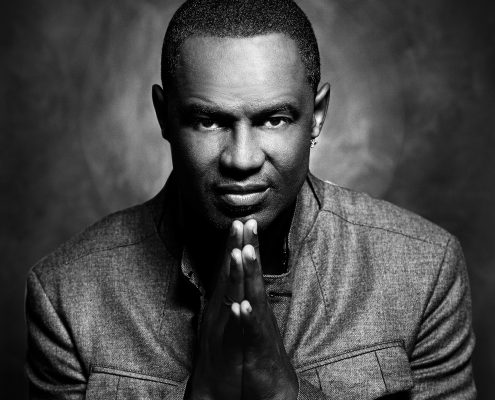
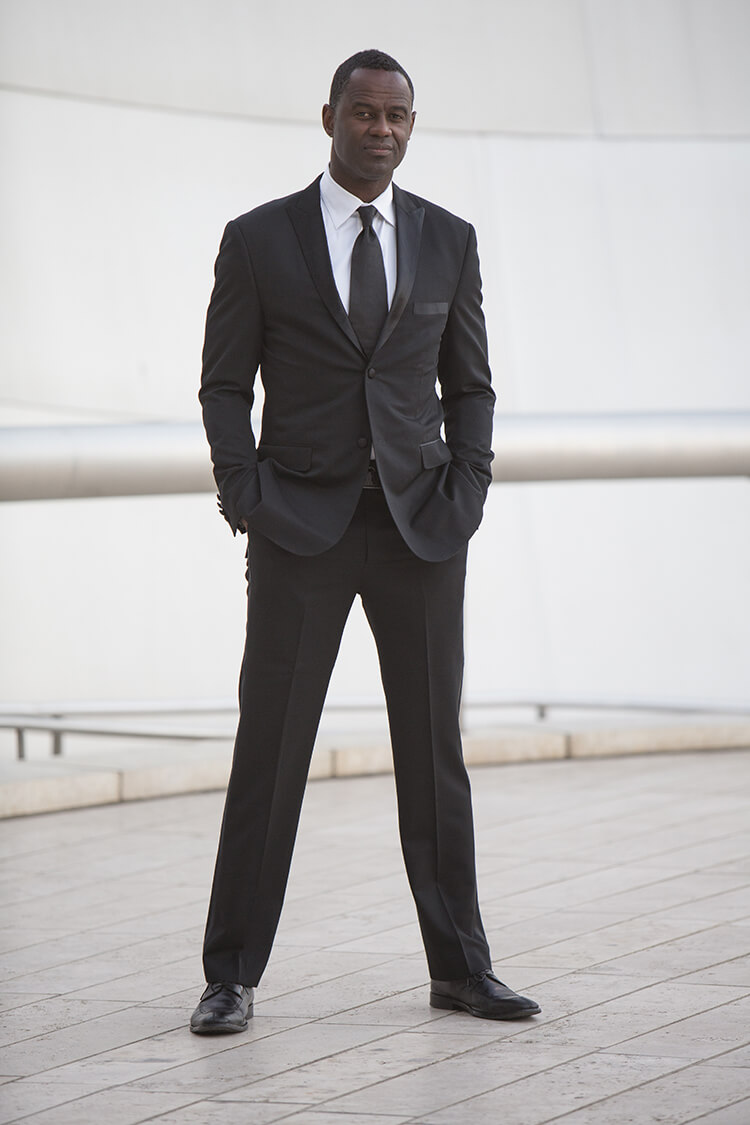
About Brian McKnight
He is practically in a category all his own: since the beginning of the ‘90s, virtually no other solo black male multi-platinum singer, songwriter, producer and musician has enjoyed a decade-long career so filled with accomplishment and achievement. Celebrating his tenth-year as an across-the-board hitmaker, FROM THERE TO HERE is a testament to the unparalleled impact Brian McKnight has made in the world of contemporary music. While ballads like ”Love Is,” his certified gold Top 5 1993 duet with Vanessa Williams and 1997’s R&B chart-topping “Anytime” established his mainstream appeal, Brian McKnight has managed to always stay contemporary via hits like “You Should Be Mine” and “The Only One For Me” (both included in 1997’s three-million-selling ANYTIME album).
The New York-born, Los Angeles-based McKnight simply smiles at the suggestion that his all-encompassing artistry has been somewhat downplayed, while the focus has been on his instantly-recognizable vocal style: “Hey, I just do what I do. I started out as a musician and a songwriter. In fact, it was the first song I wrote with (collaborator) Brandon Barnes (“The Way Love Goes”) that got me a recording contract. The first impression anyone got of me was as a songwriter who sang, not as a singer who wrote songs.” That love of writing remains a constant: “I write something every day,” Brian says. “The joy of my work is creating something from nothing and at any given time, I might have four or five ideas going…”
FROM THERE TO HERE is filled with McKnight-penned and produced gems from his very first single, 1992’s “The Way Love Goes” to 2002’s “Love Of My Life” (from Brian’s most recent SUPERHERO album). In addition to featuring Brian’s charted hits – from 1994’s “Crazy Love” (Brian’s inspired cover of the Van Morrison classic, used in the movie “Jason’s Lyric”) to “6-8-12” (a key cut on the three-million selling Motown album BACK AT ONE), FROM THERE TO HERE includes “Love Is” (from “Beverly Hills 90210”); 1994’s “I’ll Take Her,” a Top 20 single for rap act Ill Al Skratch; and the gospel influenced “Home.” Two brand new songs have also been added to the album: “Let Me Love You,” (Brian wrote and produced?) and “How I Do,” produced by Mario Winans.
The release of FROM THERE TO HERE gives the ever-busy father of two a chance to stop and reflect on a decade of non-stop activity that has netted him an American Music Award (as “Best R&B Male Solo” in 2001 for BACK AT ONE), an NAACP Image Award (as “Outstanding Artist” in 2000) and a 1999 Soul Train Music Award (“Best Male Solo Artist”) along with a 1996 Emmy nomination for “Every Beat Of My Heart,” and multiple Grammy, MTV Music Video and Blockbuster Award nominations.
Early on, Brian learned about the workings of the industry after he signed with Wing Records in 1989 when the label was helmed by veteran executive Ed Eckstine, who had worked with Quincy Jones for many years. Prior to that, Brian – a trained musician whose brother Claude is a member of Take 6 – had been diligently writing songs in Huntsville, Alabama. “The turning point came when I start writing with Brandon Barnes. He was the man who taught me everything I know about song structure and songwriting. We met when I was at a local mall to pick up a check for a jingle I had done. He happened to be in the writer’s room so I guess it was serendipity that brought us together. From that day on, we were writing three or four songs every day. Brandon came from a funk-soul background, I was more into jazz. The idea was to send out a demo that would be a springboard to get songs placed. We weren’t aiming for a record deal.”
Once the tape landed on the desks of a few executives in Los Angeles, Brian was asked to do a couple of showcases. “They liked that I was self-contained, that I wrote, sang, played. They wanted to do ‘development’ deals with me and then, Sam Sapp who worked with Ed Eckstine heard my tape.” Eckstine immediately met with Brian and signed him shortly thereafter. The process of making his all-important first album took almost three years. “I credit Ed for having the foresight and sticking with me but at the beginning, it was very frustrating. I wanted a record out! Around the same time I got my deal, I got married so it was difficult because advances from record companies only last so long.”
The pressure was eased somewhat when labelmate Vanessa Williams heard some of Brian’s work and asked him to produce several tracks on her 1991 multi-platinum “Comfort Zone” album. “While I was working with Vanessa, I was tweaking my own album. We must have cut fifty songs for my first record and it was mindblowing for me,” he recalls. “I was in real state of the art studios for the first time.”
Brian’s self-titled album was issued in July 1992, just a month after “The Way Love Goes” landed on the R&B singles chart. Receiving standing ovations and garnering support from the media at incredible industry showcases he did throughout the U.S. – where he would simply accompany himself on the piano – Brian quickly became an industry favorite at a time when rap and hip-hop was becoming the dominant focus in the world of black music. Brian’s soulful authenticity was refreshing, harkening back to another time and place when the art of the singer-songwriter held sway. “I guess I was the bridge from ‘there’ to ‘here,’” he considers. “I came out just on the cusp of when things were changing.”
The BRIAN McKNIGHT album did not have an immediate impact but serendipity stepped in once more, this time in the form of “Love Is,” a duet Brian recorded with Vanessa Williams for the then-popular television show “Beverly Hills 90210.” He remembers, “I recorded the song reluctantly. Here I was this black guy singing a pop song – and it was a song someone else had written! I didn’t want to have my first success with someone else’s song.” As it turned out, the response to the single laid the groundwork for the release of “One Last Cry” in June 1993. “That was another song I didn’t want to record!” Brian says. “I had originally planned the song for one of those real pop songstresses – you know, a Bette Midler, someone like that who could sing this brokenhearted, sad song. Ed (Eckstine) was the one who really had the vision for what the tune could especially after “Love Is.” When “One Last Cry” started taking off, I breathed a sigh of relief…and at the same time, I got my first real taste of celebrity, of being recognized and signing autographs wherever I went. It was a little overwhelming, a lot to deal with, especially since I had a family. It was hard on them, hard on me.”
Brian says he “rode the wave” and enjoyed being able to turn to all those naysayers who had doubted that a self-contained black male singer, songwriter, musician and producer could make it at a time when the industry was so focused on selling music to a teen generation. Validation came with the platinum status of the BRIAN McKNIGHT album but following it was, by Brian’s own admission, no easy task. “I ended basically writing a record that followed the feel and flavor of songs like “One Last Cry.” It was clever and I used my classical music and technical training and I kinda got all the stuff out of my system with the I REMEMBER YOU album.” Fortunately, one track – “Crazy Love,” originally cut by Van Morrison – was used for the 1995 movie “Jason’s Lyric” and ended up as the centerpiece for I REMEMBER YOU along with the hit singles “On The Down Low” and “Still In Love,” propelling the album to gold status.
“I was on the road, building a name for myself at this point,” Brian notes. “Riding bus, hanging out with the crew and the band, those were good times. We played whatever we wanted, we had so much fun.” At the same time, Brian’s recording career was undergoing change with the departure of executive Eckstine from Mercury Records. While Brian’s music – influenced by the work of such soul legends as Wonder, Gaye, Mayfield and others – had found favor with music buyers, the emergence of the so-called ‘neo-soul’ movement (with artists like D’Angelo and Maxwell) was now becoming the focus, particularly at black radio. He reflects, “I remember that with the release of my second album, I thought it was me trying to rule the world! As it turned out, with all that was happening with musically at the time, it felt more like I was in a decline.”
As it turned out, any concern for a downturn in his career quickly abated with the 1997 release of ANYTIME. The album’s first single, “You Should Be Mine” featuring rapper Mase and produced by Sean “Puffy” Coombs was a major R&B hit, immediately expanding Brian’s audience to a younger demographic. The title track became the follow-up and record buyers who had been supporting Brian since his first release were instantly satisfied that he was still producing and creating his own distinctive brand of contemporary soul music. “Anytime” became a No. 1 R&B and Top 10 pop hit, pushing sales of his third album to three million copies. “It was a calculated move,” Brian says. “I was asking myself the question, ‘how can I have it all?’ Hip-hop was so prevalent and I wanted to see how I could be the cool with that audience. That’s when we called Puff Daddy and decided we’d make the kind of record we made with “You Should Be Mine.” I found out I could be commercial at that end of the spectrum…and then we came back with the single “Anytime” and just killed ‘em! Before I did the ANYTIME album, I was at the lowest point of my career; after that, my feet came right back to the ground. I understood that what I needed to do was to please my fans, make music that would get on the radio and please myself at the same time.”
Candidly, Brian admits that the enormous success of ANYTIME “made it difficult to prioritize. My second son Niko was born after the release of my second album and my first on Brian Jr. was almost ten. I had finally begun to achieve being where I thought I should be with my career but there were not enough hours in the day. I was doing major tours, there were a lot of pitfalls I hadn’t encountered before.” While struggling with the balance between his personal life and a career that was in its ascendancy, Brian never lost sight of his one constant love — “it didn’t matter how many records I sold or how successful I became, I knew I was never going to get away from writing songs.”
In addition to nurturing his passion as a songwriter, Brian had also been spreading his creative wings as a producer. By the time ANYTIME was released in 1997, he had produced tracks for a diverse range of artists including Az Yet, Philip Bailey, Boyz II Men, For Real, Damion Hall, Cindy Mizelle, CeCe Peniston, Take 6, Waymon Tisdale, Vesta and Christopher Williams. In the wake of the multi-format success of ANYTIME, Brian dueted with Mariah Carey on the song “Whenever You Call” from the singer’s 1997 smash album “Butterfly” as well as earning the first two of the string of Grammy Award nominations he’s earned to date.
In 1998, Motown Records (which had become Brian’s recording home with the release of ANYTIME) issued the holiday album BETHLEHEM (which featured Boyz II Men, Dave Koz, brother Claude McKnight, Tim Miner, Julie McKnight and Brian’s two sons). The same year, he began planning the 1999 album BACK AT ONE.
“I think of that album as a marker. If ANYTIME was black and white, BACK AT ONE was like color. The tours got bigger, the audiences more diverse. I went from playing Radio City Music Hall to Madison Garden. I remember what a trip it was for my father, who’s a New York native, to see my name up there at The Garden. By the time I finished BACK AT ONE, I had built my ‘dream’ house. With that record, I felt like I really got on track with my career..”
With sales of over three million copies, 1999’s BACK AT ONE yielded significant singles: the title track which stayed at No. 2 on Billboard’s pop charts for eight weeks; “Stay Or Let It Go”; and the standout acoustic-flavored “6-8-12.” Commenting on BACK AT ONE, Brian says, “I approached making the album with a particular psychology. It was about setting the bar higher creatively. I don’t ever want to be complacent so it was about challenging myself, trying to come up with original ideas. As a lyricist, I write conversationally and while I want the music to be accessible, I also have to make it interesting for me.”
In 2000, Brian was featured on Motown labelmate BeBe Winans’ “Love & Freedom” album and as a result, nabbed another Grammy nomination for “Coming Back Home” (which featured Brian, R&B star Joe and Winans).
Brian continued adding to the ever-growing list of accolades and awards by becoming the first songwriter to be ranked No. 1 on the Hot 100 Songwriters, No. 4 on the Country and Tracks Songwriters and No. 7 on the Hot R&B/Hip-Hop Singles and Tracks Songwriters with Billboard’s Songwriters 2000 listings. The following year, he worked on records with N’Sync (as a producer on the group’s album “Celebrity”), Alicia Keys (on her auspicious debut “Songs In A Minor”) and duetted with the legendary Willie Nelson on “Don’t Fade Away”(a key cut on Nelson’s “The Great Divide” album) as well as completing work on his sixth album, superhero. In between sessions for the album, Brian took time to devote to one of his other life passions, playing basketball. He muses, “Because of some of the songs I write, people tend to think of me a particular way – this gentle, sensitive man. I may be that but the concept is that I am the same guy in person that I am in the music I write when in reality, there is a difference between the two. I’ve been playing semi-pro every summer for the past few years and whenever I get out there, I have to show that I am serious about playing.”
Once again showcasing his multi-faceted musical skills, Brian applied himself to the production of SUPERHERO and the result was another hit album that included the key cuts “Still” and “Love Of My Life.” He observes, “making that record was like another reinvention for me, like my sound was evolving again. You could view the album as a diary of the past year of my life and these songs as a beacon for me to try to reach higher. I had a tremendous amount of fun making this album and I didn’t get all caught up in the notion of trying to duplicate past hits or necessarily sticking to ‘my sound’. This time I said, ‘OK, What can I do to make things more fun?’” The answer came with cuts like the title track which was inspired in some part from melodic but heavy acts like AC/DC, Van Halen and The Who: “People hadn’t heard that side of me before but I really wanted to show a side of me that’s different.”
Concert audiences are constantly surprised at Brian’s musical versatility and while the public perception has been that he is considered a singer-songwriter, Brian is at heart a musician of the first caliber. That desire to surprise and confound those who may pidgeon-hole the highly personable artist and performer extends to other aspects of his life: confessing that he’s “addicted” to speed racing, Brian can be found doing 190mph on a motorcycle as part of a race team he owns. Of course, that’s in between scuba diving with sharks (“I did that for a program for the Discovery channel and it was scary the first day but you soon find out that the sharks are not even interested in you!”); sky-diving (“perfect for control freaks like me!”); playing golf or bowling, one of his latest personal passions.
Beyond an aural photograph of a decade in which Brian has constantly evolved as a creative artist, FROM THERE TO HERE bears witness to his multi-faceted skills in writing and producing his own work as well as accompanying himself on a range of different musical instruments on every one of his six albums. It is such musicality that calls to mind legendary names from previous decades, such as Stevie Wonder and Prince, making it hard to identify too many other young African-American male performers who have had such an impact in the past decade.
Related Artists



